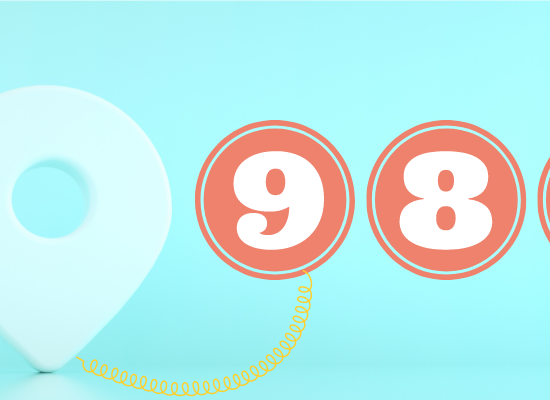
Stephanie Hepburn is a writer in New Orleans. She is the editor in chief of #CrisisTalk. You can reach her at .
Charles Kinsey, a behavioral therapist, lay in the street with his arms high in the air. He told officers that the man next to him, Arnaldo Rios Soto, had severe autism and didn’t have a weapon. “All he has is a toy truck in his hand. A toy truck.” “That’s all it is—there’s no need for guns.” Rios Soto had wandered away from MacTown, a North Miami group home. A passerby called 911 when they’d confused the toy truck for “something shaped like a gun.” The caller had created an entire narrative over what she perceived she saw, telling the 911 call taker she’d seen a man holding a gun to his head while another man was “trying to talk him out of it.” Rios Soto is Latino, and Kinsey is Black.
A SWAT team arrived. Officer Jonathan Aledda shot Kinsey in the leg, and officers handcuffed both Kinsey and Rios Soto. “I was really more worried about him than myself—because I’m thinking as long as I’ve got my hands up, they’re not going to shoot me,” Kinsey told WSVN-Channel 7 from a hospital bed at Jackson Memorial Hospital.
The 2016 landmark case received nationwide attention and increased recognition that when people with intellectual and/or developmental disabilities experience a behavioral health emergency, crisis responders must have competency in working with various IDD populations. “There needs to be aptitude on the other end of those calls to help navigate the situation,” says Mary Sowers, executive director of the National Association of State Directors of Developmental Disabilities Services. She hopes communities will capitalize on 988 to ensure expanded and re-engineered systems integrate care for people with IDD. “Unfortunately, for a host of historical reason, behavioral health has often failed to adequately consider these populations.” Telecom carriers must direct the three-digit nationwide number for mental health, substance use, and suicidal crises to the National Suicide Prevention Lifeline by July 16.
Sowers points out that behavioral health crises among IDD populations only represent a small fraction of overall psychiatric and substance use emergencies, but they’re often high impact. “People might present with more complicated communication needs and therefore need additional staff support to help with de-escalation,” she says. However, in the United States, there’s long been a presumption that a person with IDD can’t have co-occurring mental health support needs. Sowers notes that’s often contributed to their “exclusion from consideration” as communities have built and expanded their crisis systems.
Experts have suggested various approaches to bridge gaps for marginalized populations, including linguistic and cultural concordance and literacy at 988-Lifeline accredited call centers. For example, Steve Hamerdinger emphasized that call centers must have a deaf-specific option. “We need immediate access to a call counselor who is ASL fluent,” he said. “A person in crisis shouldn’t have to depend on an interpreter to convey their feelings.” Hamerdinger is the Office of Deaf Services director at the Alabama Department of Mental Health.
The same is true for people with IDD, though Sowers says specialists don’t need to be on the 988 call center operations floor, but dedicated virtual co-location would help to shift IDD awareness and more rapidly connect people to resources they need. “988 needs to have access to people with that expertise,” she says, “through partnerships with state IDD agencies or state-level groups like DD Councils, Centers for Independent Living, and University Centers for Excellence in Developmental Disabilities.” She envisions partnerships with groups that would provide on-call capacity and geographic coverage. Providers and clinicians who specialize in supporting IDD might also be able to fill the role. “The expertise wouldn’t be limited to problem solving and resources,” notes Sowers, “but also include strategies for de-escalation that might be more effective for people who communicate differently or have different perceptions and learning.”
Six months into the pandemic, a Salt Lake City Police Department officer shot Linden Cameron, a 13-year-old boy with autism who was experiencing a mental health emergency. The officer shot him 11 times. Cameron survived but suffered serious injuries. His mother Golda Barton told KTVX-Channel 4 that Cameron still asks her, “Why did they shoot me?” A month after the shooting, the police department announced it would partner with the national nonprofit KultureCity in a sensory inclusive training, which focuses on the sensory needs of military veterans with PTSD and adults with dementia, Parkinson’s disease, and those who have experienced a stroke.
In 2021, Utah Rep. Steve Eliason and State Sen. Daniel Thatcher sponsored legislation requiring law enforcement training to include special needs training on autism spectrum disorders, other neurological and developmental disorders, and mental illnesses. However, law enforcement must be able to easily and quickly divert people with IDD who are experiencing a mental health crisis. Sowers says that’s where it gets complicated.
Experts point out that the “no-wrong-door” approach in SAMHSA’s National Guidelines for Behavioral Health Crisis Care must fit all populations and their specific needs, including those with co-occurring IDD or substance use challenges. However, many crisis stabilization facilities continue to reject people because they’ve been drinking or have taken another substance. Similarly, a detox center might turn away someone experiencing suicidal ideation. Sowers points out that the “they’re not my population to serve” mindset is highly problematic and commonplace among behavioral health and IDD service providers. “This situation plays out time and time again,” she says.
If someone with an intellectual and/or developmental disability goes to the emergency room experiencing suicidal ideation, a mental health facility might reject them because they have an IDD. And the IDD agency will likely argue that the IDD isn’t what’s causing the suicidal ideation. “While the silos are fighting it out,” says Sowers, “the person is left without essential support.”
One challenge is the anachronistic perception that people with IDD can’t benefit from rehabilitation. “That’s where most mental health services are housed within Medicaid,” notes Sowers. Unfortunately, while state leaders are increasingly aware of the falsehood, there continue to be remnants of it in state structural pieces, whether in Medicaid state plans or statute, resulting in the exclusion of people with a primary diagnosis of IDD from mental health treatment. “There often becomes this big turf battle on the primary diagnosis,” she says. “It’s a false dichotomy—if you have a bad hip and heart condition, which is your primary diagnosis?”
Across the board, policy relics have made system progress incredibly challenging. “It’s almost like an archeological dig,” says Sowers. For example, home and community-based services remain elusive in behavioral health because of Medicaid’s Institutions for Mental Diseases Exclusion, which renders HCBS waiver programs often inaccessible because those programs require an allowable Medicaid institutional alternative. “These long-standing policies have had ripple effects throughout the system on how they’re impacting people’s day-to-day lives.”
Across the US, states aim to build local 988 systems that are well connected to all parts of the behavioral health crisis continuum and to 911 for diversion and partnership, helping foster parity between medical and behavioral health emergencies. However, Sowers suggests they also dig into policy and procedural relics and remove parts that contradict their overall objective. That includes addressing law enforcement policy and protocols on the use of handcuffs and other restraints for people in crisis. “There’s been a lot more attention on helping educate law enforcement on effective strategies when they encounter people who might have IDD and mental health issues or just IDD,” says Sowers. However, there are still procedural holdovers, like the use of restraints, that impede parity as well as a lack of linkage between systems on crisis response teams with IDD expertise.
Even after officers had been made aware of Rios Soto’s disability, they took him in handcuffs to the police station, where a detective interrogated him. The podcast Aftereffect has done a deep dive on the case. Here’s a snippet of the interrogation after detective Michael Gaudio asked Rios Soto what had been in his hand:
Detective Gaudio: Was it shiny?
Rios Soto: Shiny.
Detective Gaudio: Or was it black?
Rios Soto: Black.
Detective Gaudio: Was it red?
Rios Soto: Red.
Detective Gaudio: Or was it blue?
Rios Soto: Blue.
Detective Gaudio: Okay.
Rios Soto: Okay.
According to a lawsuit his mother Gladys Soto filed against the City of Miami and other defendants, Rios Soto’s behavior regressed because of trauma from the shooting and arrest. Since the incidents, he has cycled in and out of group homes and psychiatric hospitalization. “IDD experts don’t need to go out on every call, but it’s essential that there be someone on call,” says Sowers. “Bringing in a person who understands IDD and how it’s manifesting can help avoid a fatal or traumatizing interaction.”









